Which of the Following Components Continues to Be Powered When the Vehicle is Not Running
(Updated on May 20, 2020)
When you are driving a car, your engine and all the other components must work extra hard if you're moving up an incline or a hill. You need to have enough power to be able to accelerate a vehicle anywhere, especially up a hill where gravity is pulling against it.
If there are any faulty components in the vehicle, then this could make it harder for the engine to push the vehicle up the hill as you attempt to accelerate. There are so many reasons for why this could happen, so you need to pay attention to the various causes and possibilities for this.
Read also: Causes of a Car That Won't Accelerate
Reasons Your Car Loses Power Going Uphill
1) Bad Fuel Filter
You can't have a good working engine without fresh pure gasoline flowing into it at all times. If you don't have a good fuel filter to prevent the impurities of the fuel from flowing into the engine, then it could ultimately jeopardize the performance of your engine.
Fuel filters typically have a service interval for when they must be changed. If the fuel filter is not changed for a long time, eventually the particles and sediment from the gas tank will build up and clog the filter, restricting fuel flow.
If the flow of fuel is restricted too much, not enough will be able to reach the fuel injectors and the car is likely to run lean.
2) Clogged Exhaust Filters
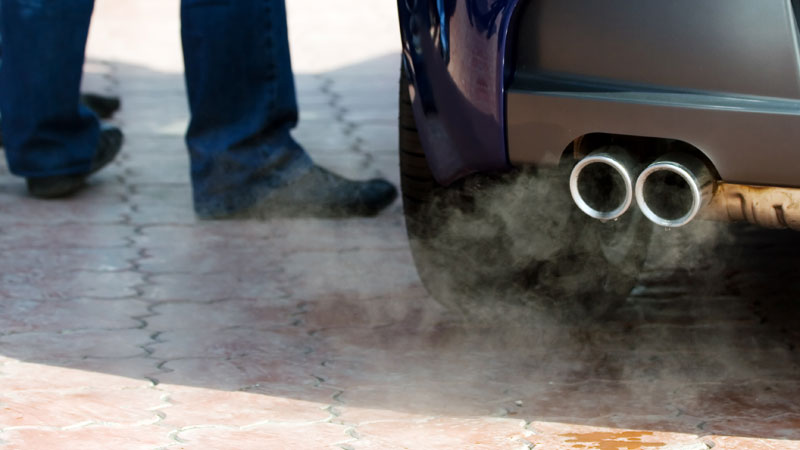
The catalytic converter and the muffler serve as filters for the exhaust pipe, for harmful emissions and sound respectively. The muffler reduces the noise from the exhaust and the catalytic converter reduces the exhaust pollution.
If either one of these filters gets clogged, it limits the engine's power and ability to accelerate. You may be able to drive slow on flat roads but once you get to an uphill road, you likely won't be going anywhere fast.
A clogged exhaust can be dangerous, as it is a fire hazard in extreme cases. If you think your exhaust may be clogged, the issue should be addressed as soon as possible. Depending on what's wrong, you may be able to clear it yourself.
3) Clogged Air Filter
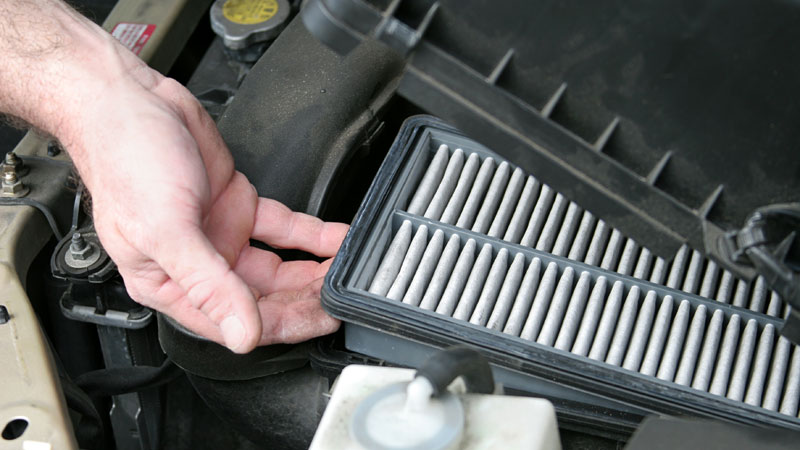
As much as the internal combustion chamber needs clean fuel, it also needs clean air to be mixed together with it to keep the engine powerful.
If you were to have a clogged air filter that wasn't able to prevent impurities like debris and bugs from getting into the internal combustion chamber, then these impurities could end up damaging the engine.
It is important to have a clean air filter that is not clogged so air can continue to pass through the filter and enter the chamber without the impurities in it. Otherwise, the engine will never be powerful enough to make it up a hill.
4) Vacuum leak

Vacuum leaks often only affect vehicles at idle, but if the leak is bad enough it may affect overall vehicle performance. A vacuum leak can be tested for using a smoke test to make sure the air intake system is sealed tight like it should be. A vacuum leak will make the vehicle run lean as unmetered air is enters the intake manifold.
5) Clogged Fuel Injectors
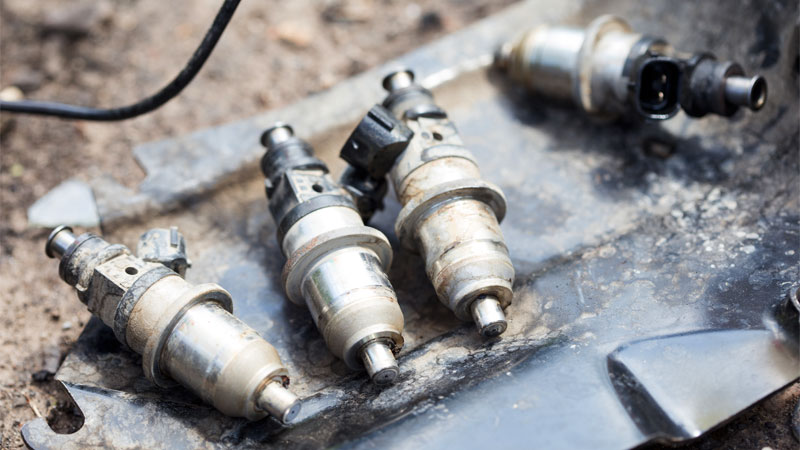
Fuel injectors are the last parts before the combustion chamber in a long list of components that make up the fuel system.
Injectors usually last for a long time, but they can become clogged with age or poor fuel quality as the fuel filter fails to pick up all the sediment from the gas tank. If an injector gets clogged, it affects the spray pattern and the injector's ability to atomize fuel.
If the injector clogs completely or stops working, no fuel will reach the combustion chamber and no power will be made on that combustion stroke.
6) Bad Fuel Pump
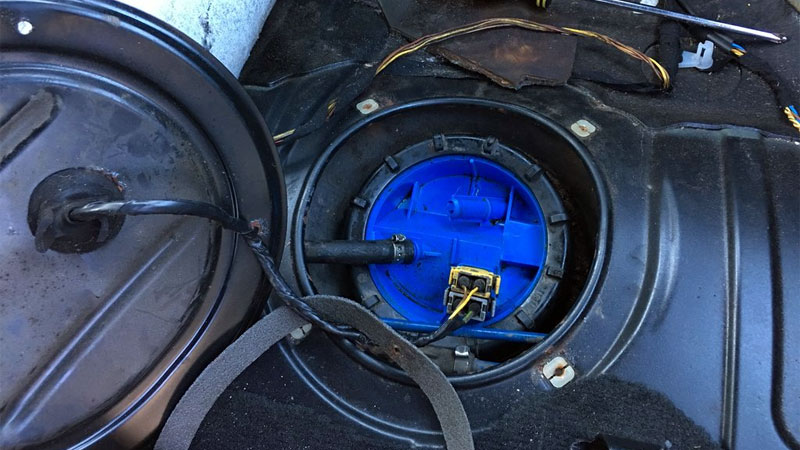
If the fuel pump is on its way out, it may work intermittently or not at all. A symptom of starving the car for fuel is a car that runs correctly at idle and low load, but falls flat on its face as you ask for more power (when climbing a hill, for instance).
Fuel pumps may fail due to age, sediment buildup, or running the incorrect fuel. If you drive around with a nearly empty gas tank often, you may want to rethink that habit. Fuel is used to cool the fuel pump, and running with less than a quarter tank for long periods of time may reduce the life of the fuel pump substantially.
7) Bad Spark Plugs
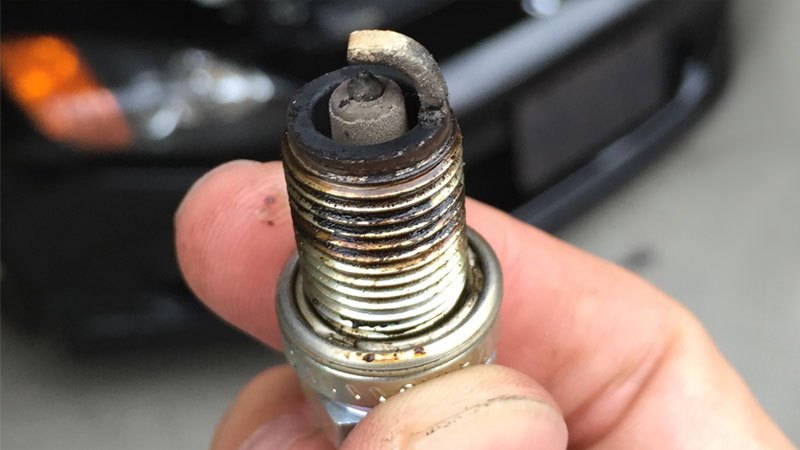
As your spark plugs age, the spark gap can increase as the center and ground electrode(s) wear out. If this gap becomes too great, the spark may not always be able to jump the gap.
No spark means no combustion in that cylinder, which leads to misfires. This is a wasted combustion cycle where no power is generated.
8) Bad Ignition Coils or Spark Plug Wires
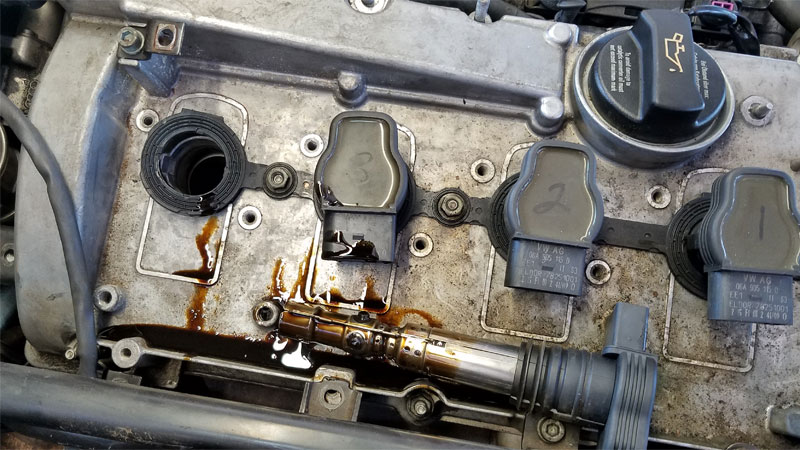
Ignition coils and spark plug wires convert the low voltage power from the battery into the high voltage necessary to jump the spark plug gap. As ignition coils and wires wear, they may lose insulation and short out. When this happens, sufficient voltage may be unable to reach the spark plugs, causing misfires.
9) Faulty Camshaft Position Sensor
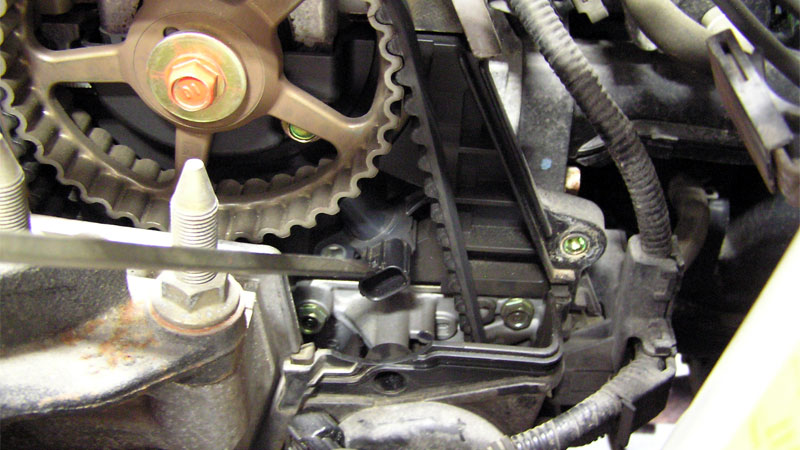
The camshaft position sensor calculates the camshaft speed and transmits this information to the electronic control module. That way, the engine control module can manage the ignition timing and fuel injection timing properly.
But if you were to have a faulty camshaft position sensor, then the timing on these two would be off. This would limit the engine's power considerably and certainly make it harder to drive the vehicle up a hill.
10) Low Cylinder Compression
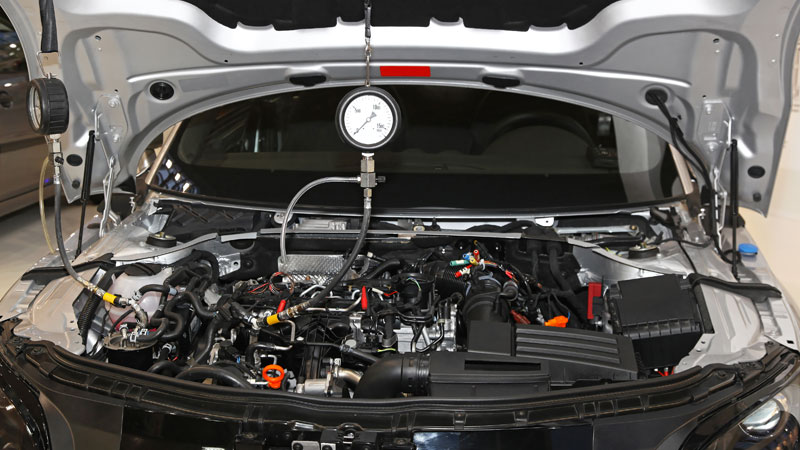
Having high cylinder compression is critical for giving the engine enough power to get the vehicle up a hill. Once you start experiencing low cylinder compression, your vehicle will always be struggling on an incline because the engine power won't be strong enough to push it up there.
11) Ambient Conditions

If it's really hot outside, your vehicle will have higher intake air temperatures. Higher intake air temperatures makes the engine more prone to knock. When the engine knocks, the computer has to remove ignition timing which reduces power and makes the combustion a bit safer for the engine components.
You're likely also running the air conditioning, which makes the engine work a bit harder.
If you're driving at a very high altitude, there is less air to suck into the engine. Less air means the computer has to inject less fuel to maintain the proper air fuel ratio, so the car will not make as much power.
Altitude affects turbocharged vehicles much less than naturally aspirated and supercharged vehicles. In a turbocharged vehicle, boost will increase until the target boost pressure is reached. For other induction types, the intake pressure is based on mechanical constraints and cannot be adjusted by the engine computer.
Things to Remember
If you start to have acceleration problems as you attempt to drive uphill, do not slam down on the gas pedal to try to get up the hill. You will only put more stress on the engine which won't do any good if there is an issue somewhere in the engine.
The best thing you can do is to avoid driving on severe inclines only until you can get to an auto repair shop. But if these problems get any worse, then even driving on flat roads will eventually become a challenge too.
It all depends on how long you let the problem continue to last.
Source: https://oards.com/causes-of-a-car-struggling-while-going-uphill/
0 Response to "Which of the Following Components Continues to Be Powered When the Vehicle is Not Running"
Post a Comment